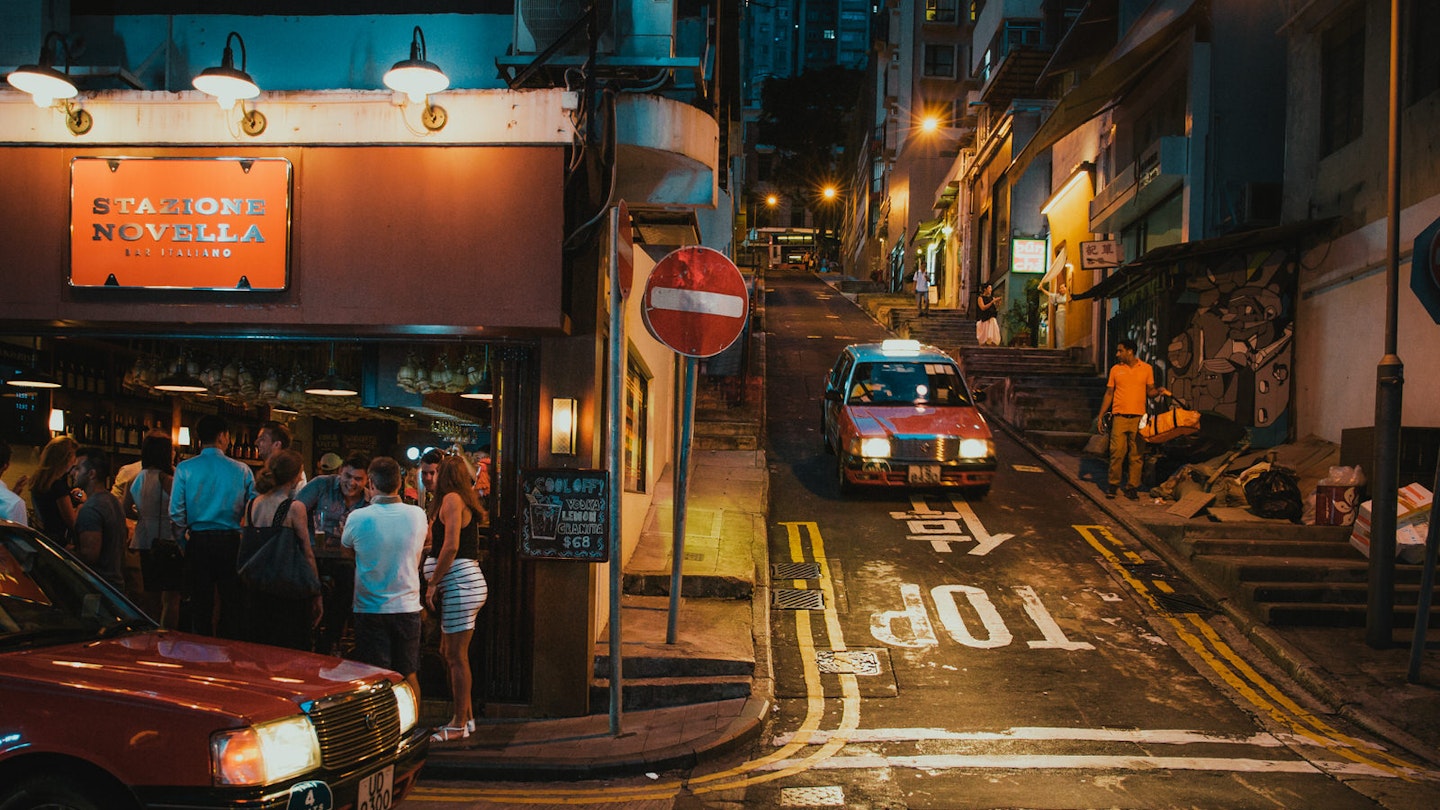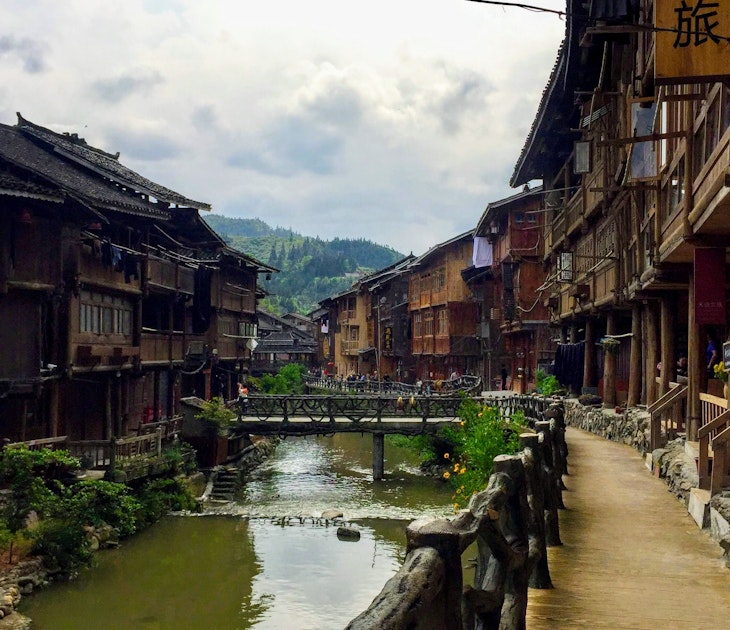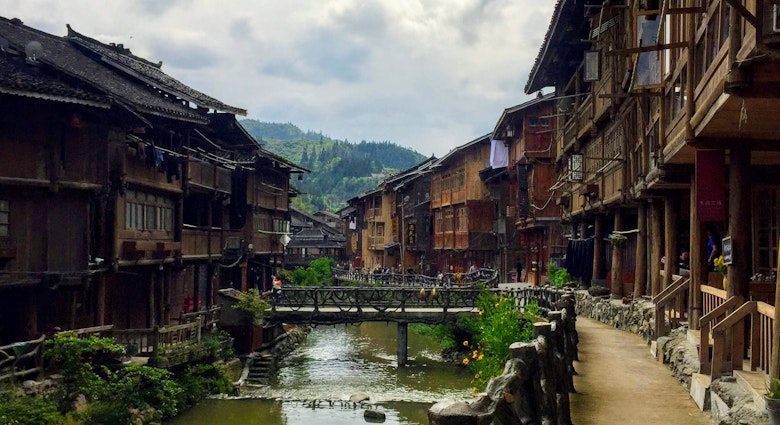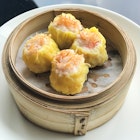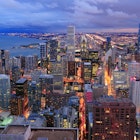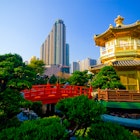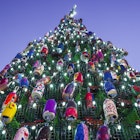Impervious to the day-in, day-out waft of incense, a thick flow of sharply suited city workers, selfie-stick-wielding shoppers and giddy bar-hoppers pass below and above a tiny shrine on Peel St as though it were invisible. Nobody ever seems to pause on this stepped slope in Hong Kong’s Central district, but the coiled incense burners hanging from the shrine’s corrugated metal ceiling are always lit.
It is a remarkable clinger-on in an area that is fast shedding all its historical baggage and metamorphosing at breakneck speed.

The beating heart of Hong Kong’s banking district, for decades, the Central neighbourhood has been performing an archaic dance of old and new. Home to the HSBC Building designed by Sir Norman Foster, and IM Pei’s prismatic Bank of China Tower, it bristles with skyscrapers that rise from a sea of luxury malls. Yet Peel St and its neighbours are among Hong Kong's oldest streets, built in the shadow of Victoria Peak shortly after the British planted their flag on this sub-tropical slope in 1841. As a 19th-century port, the area was rife with gambling, prostitution and opium dens. Today, colonial relics cower in the cavities between Central’s steely teeth.
It was also Hong Kong's main Chinese settlement, full of traditional shops and shrines. Peel St was once known for its calligraphers, but it is now part of modern day Soho: jazz notes escape from a thickly draped doorway as a punter pushes through, foodies hover with intent around a trendy French steakhouse patiently waiting for a table, and just above the streetside temple, a sign advertises local craft beer, illuminated by a neon glow.
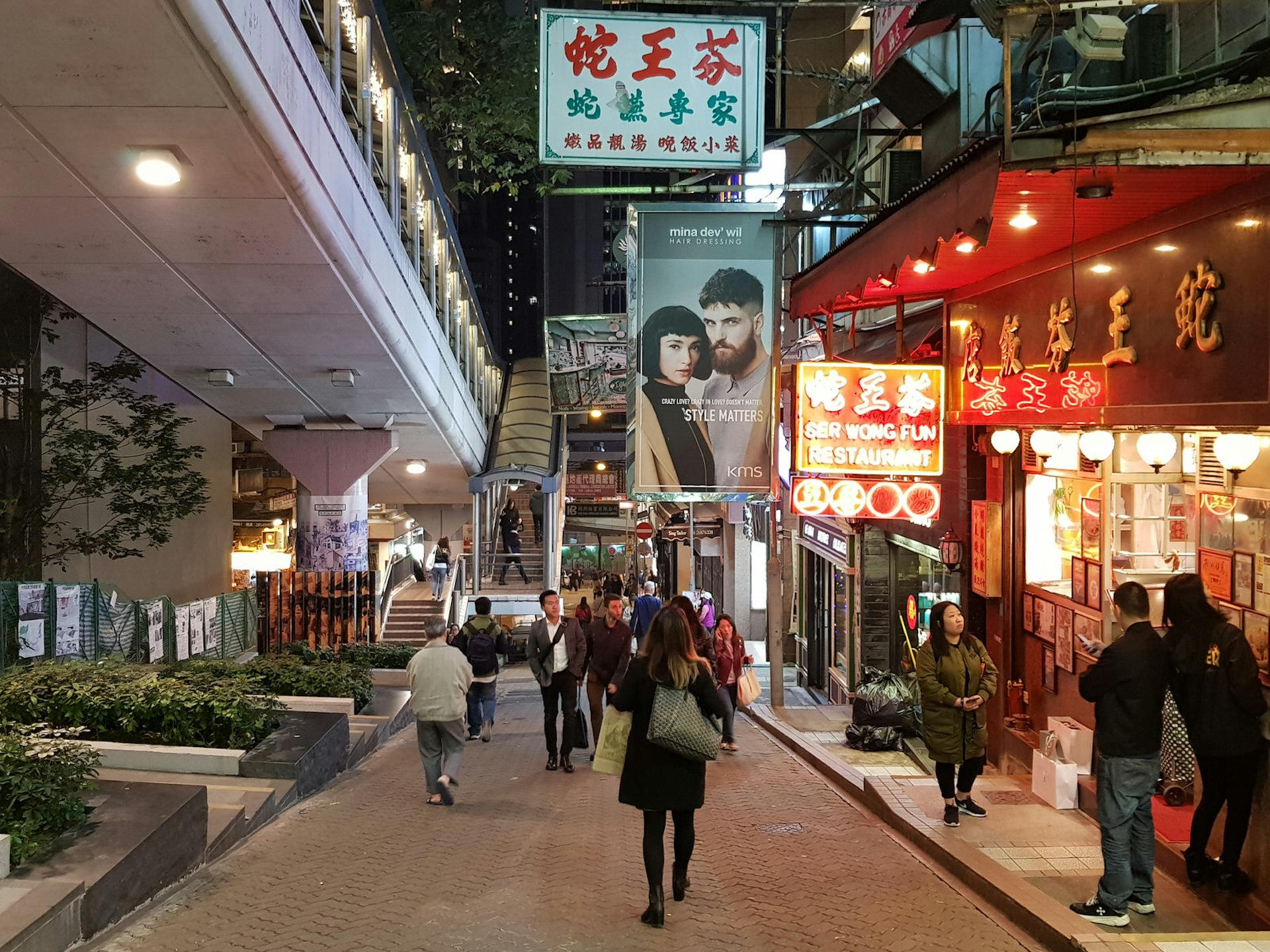
A 21st-century Asian super-city
Twenty-one years after the British left Government House, Hong Kong's Central District has evolved as the showpiece for a 21st-century Asian super-city, and the balance is tipping in favour of all that is new and shiny. Mainland China accounted for 76% of all visitors to Hong Kong in 2017, and the city is adjusting to this group’s travel trends and desires. Luxury retailers, restaurants and high-end art dealers are replacing pokey antiques shops crammed with Chinese tombware, and bars listed among the 'World’s Top 50' are attracting Instagrammers rather than bohemian revolutionaries. Hong Kong Island’s first 'flashpacking' hostel (complete with co-working space) has just opened on the borders of Soho and Sheung Wan.
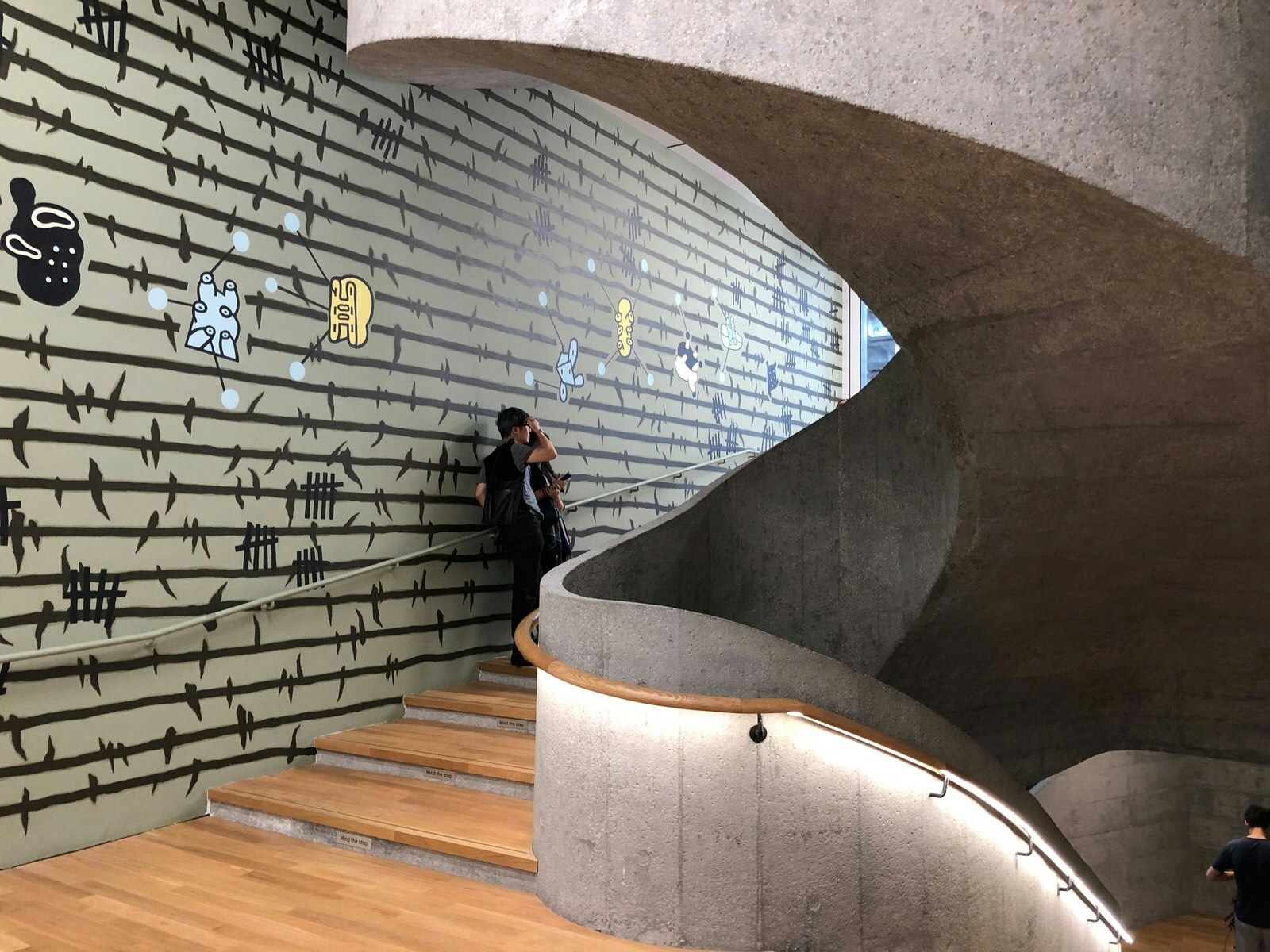
Most significantly in 2018, Central cut the ribbon on Tai Kwun, the phoenix that has risen from the ashes of Hollywood Rd’s former Central Police Station, housing the area’s first major art gallery.
‘The opening of Tai Kwun next door to our gallery has led to an increase in footfall,’ says Jonathan Wattis, whose small shop specialising in Asian fine art prints and antique maps, Wattis Fine Arts, is about to celebrate 30 years at this location in Central. ‘In the late 19th century, this would have been the red light district together with Lyndhurst Terrace,’ he muses. At this end of Hollywood Rd, in an area that was once world-renowned for its antiques shops, Wattis is part of a shrinking tribe of independent businesses. Overnight rent hikes of 50% or more have become the butt of jokes in this neighbourhood. ‘I believe because we are on the 2nd floor of an old building, with no lift or escalator and no real management services, we have been able to stay here for this long,’ he says.
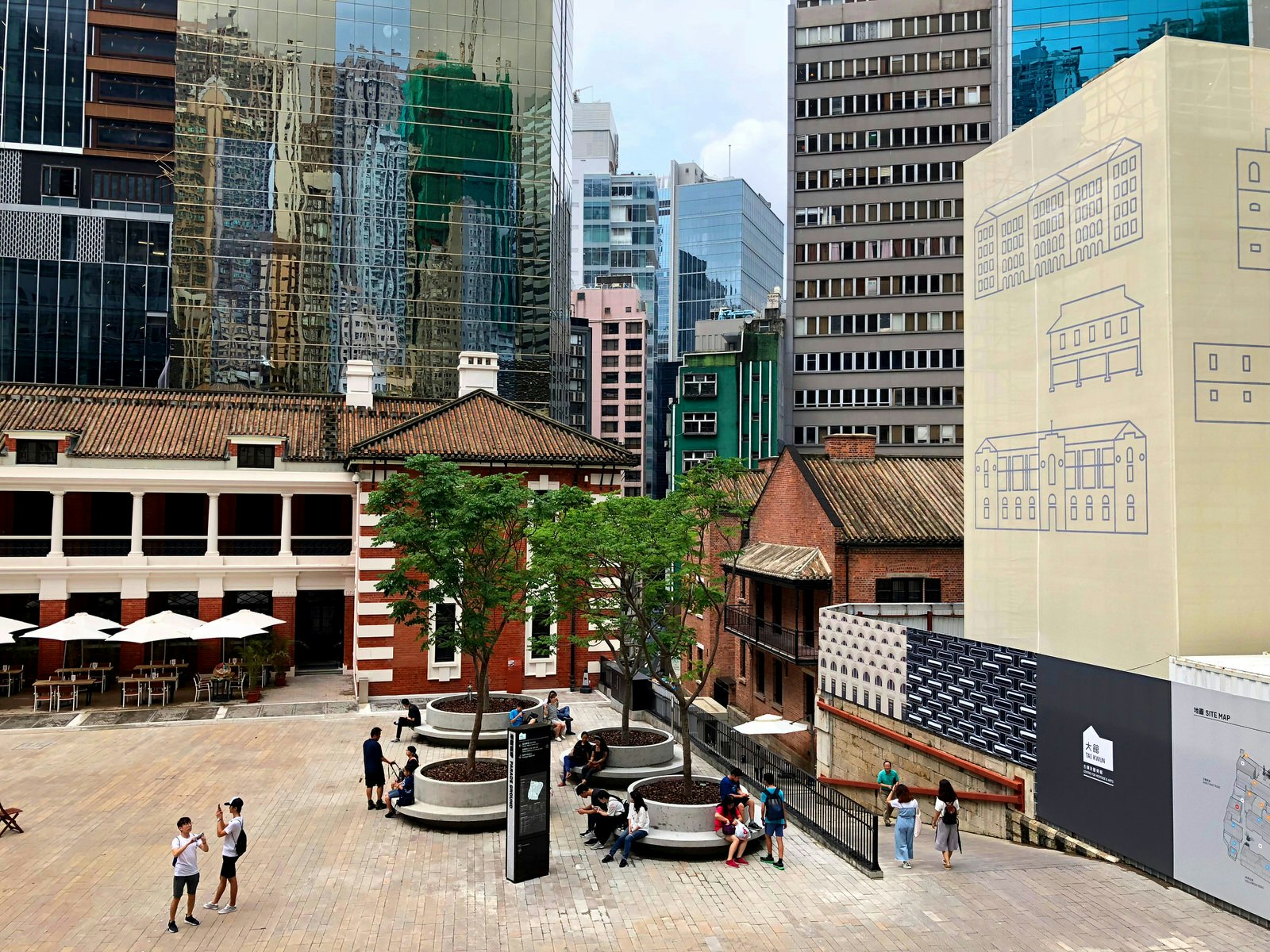
Tai Kwun’s swan song
The renovation of Tai Kwun may signal a new era for Central, but it is also magnifying the area’s past. Its fortress-like colonial façade is now bolder than ever and the heritage exhibitions inside the complex – some permanent, some temporary – feel like a swan song to a collective community history that is slipping through locals’ fingers. In May 2018, the complex’s flagship opening exhibition, 100 Faces, involved interviewing 100 residents of Central that had a relationship with the former Central Police Station. These were accompanied by illustrations by a local artist known as Flyingpig, who has spent her career recording Hong Kong’s old shops and buildings, and says that traditional businesses are disappearing rapidly.
‘Hong Kong people don't treasure old Hong Kong culture,’ she says, citing societal change as one major factor in why local businesses are closing. ‘The owner gets too old, and their son or daughter may not want to inherit the shop.’ Other reasons she has identified through talking to the community are high rents forcing businesses to move, and the government or developers taking back land for residential or commercial use.

Redevelopment angst
Hong Kong’s voracious appetite for renewal and redevelopment is a particularly raw issue for shops and hawker stalls operating around Central’s Graham Street Market. Here, the brash jab of Cantonese still accompanies morning shopping hours on the site of Hong Kong’s oldest wet market. The area has been earmarked for a HK$3.8 billion redevelopment for housing, retail and office space by the Urban Renewal Authority.
Plumes of dust now strangle the thin artery of market traders that remains in the midst of a building site between Peel and Graham Streets. Many family traders in the surrounding streets have been forced to move already. In September 2018, Hong Kong’s Civic Party launched a renewed appeal to save the site. After years of indifference, heritage conservation is finally moving up the political agenda.
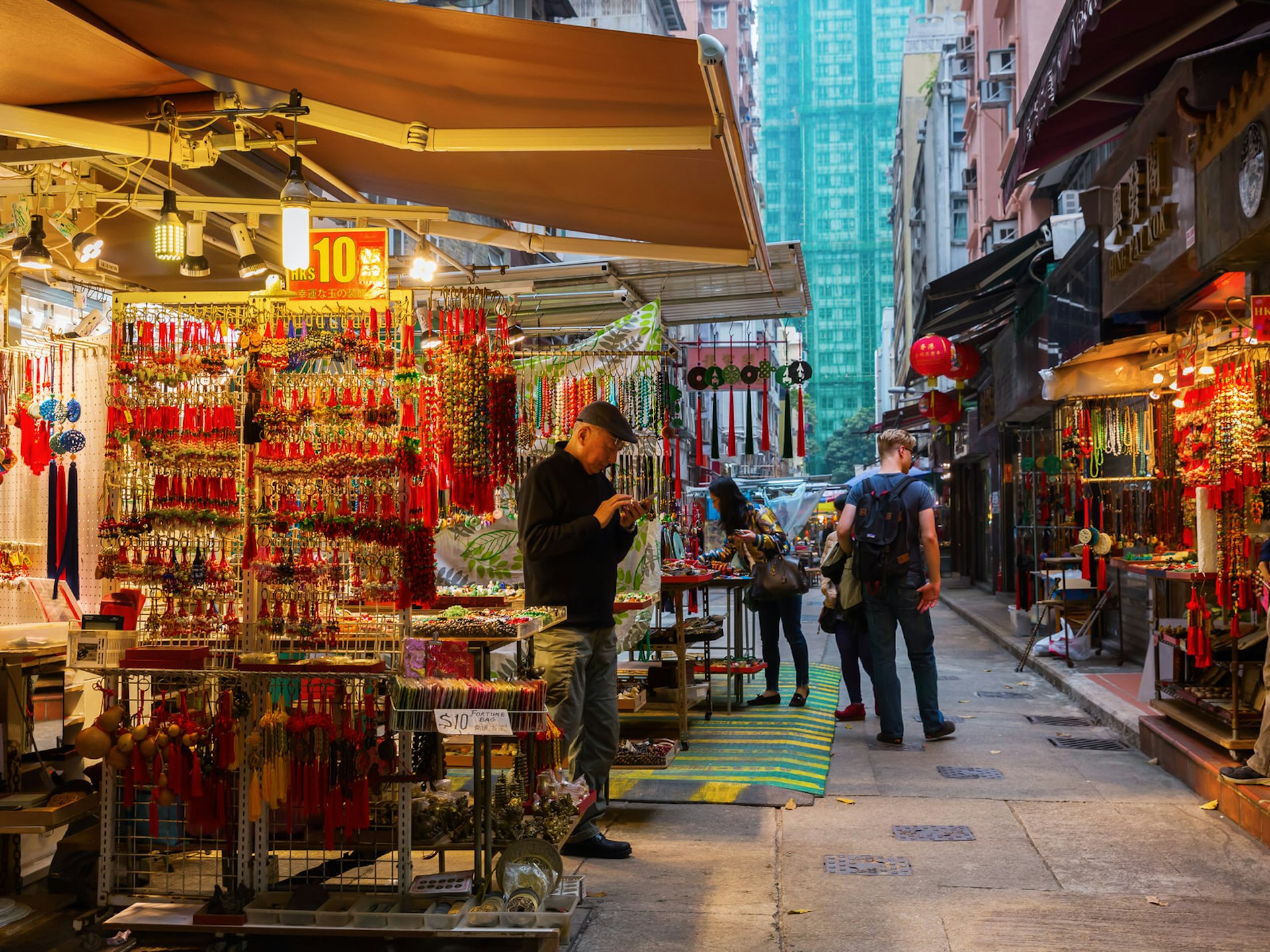
The stalled redevelopment of nearby Central Market has also irked heritage preservation campaigners. This modernist landmark is to be regenerated for affordable culture and retail development (by 2021–22), but has lain empty for more than a decade. Underneath the market’s hoardings, the walkway that links the site to the start of Hong Kong’s Central–Mid-Level Escalator – the longest of its kind in the world, now in the throes of its own upgrade that is set to be completed in 2022 – currently hosts an exhibition redolent with nostalgia titled Tales of Central. A series of sepia panels charts the history of Central’s original 13 lanes.
Finding old Hong Kong
Central’s mix of new development and urban preservation projects promises change but also an interesting future for the neighbourhood. Right now, pockets of old Hong Kong still remain. ‘Many shops and streets have changed rapidly in the past few decades; however, Central still has many old residents. Their stories are still in the city,’ says Flyingpig. Tourists curious to catch a whiff of Central’s traditional culture need only take to the streets. During the lunch-time rush, Lam Wai-ching’s Good Spring Co on Cochrane St can still be found serving takeaway bitter herbal teas to a constant flow of frazzled city workers. His grandfather did the same from a hawker cart here in the early 1900s. From 6pm, queues still form outside Kau Kee Restaurant. It’s a Central institution that began life as a dai pai dong (street food stall) and has been doling out butter-soft beef brisket noodles on Gough St for more than 80 years. Other survivors, like Kung Lee (established in 1948) and Kowloon Soy Company (1917), remain despite mounting rent pressures.
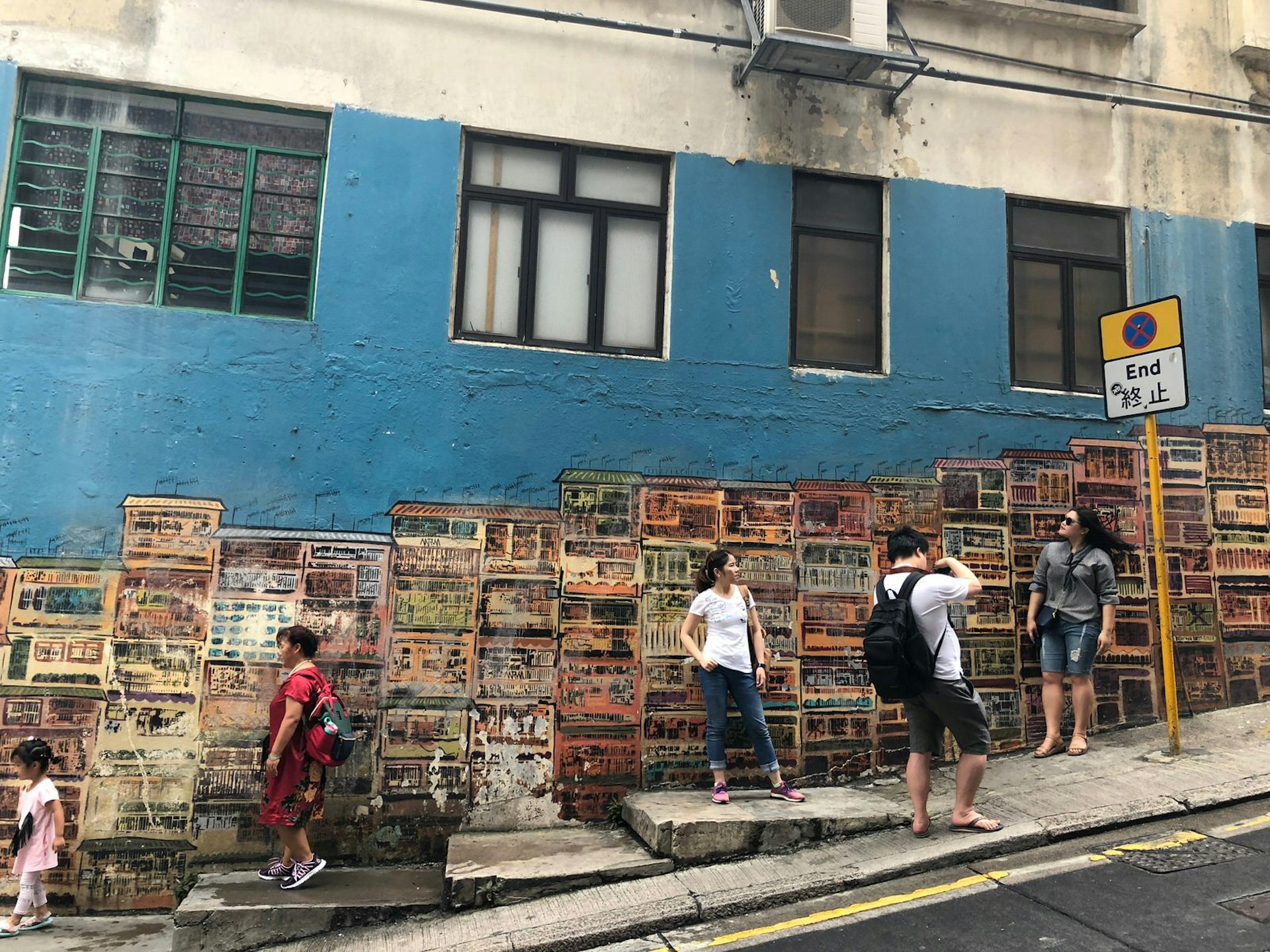
And younger generations of Hong Kongers – like Flyingpig, who was born in the 1990s – are beginning to ride the nostalgia wave. One of the most photographed locations on Hong Kong Island is a street art mural of old Hong Kong tenements at the intersection of Graham St and Hollywood Rd, where Instagrammers have leaned so often that the paint is being rubbed clean. The mural was commissioned in 2014 by home-grown retailer G.O.D., which specialises in designs that channel Hong Kong memorabilia. Bars and restaurants, like wildly popular Ho Lee Fook, are starting to channel old Hong Kong too.
The rhythm of daily life in Hong Kong may be changing, but as businesses and developments start to draw from the city’s past, the dance between old and new continues.
https://shop.lonelyplanet.com/products/hong-kong-city-guide-17
